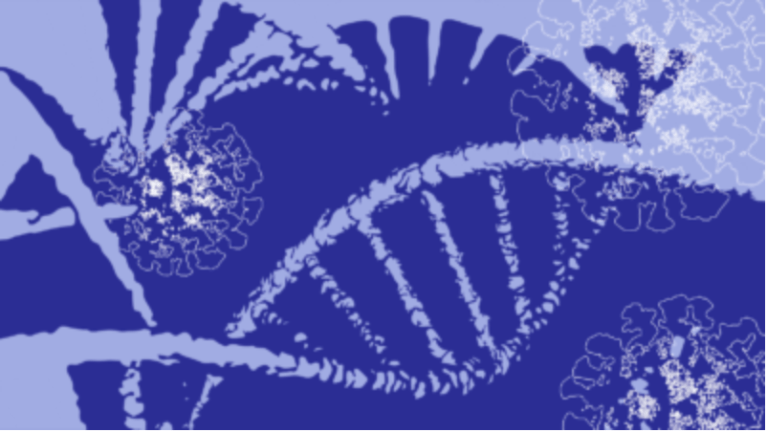Findings from a Stanford study into a patient with both COVID-19 and the human immunodeficiency virus (HIV) support prevailing theories that new viral variants, including the highly transmissible omicron variant, may originate in immunocompromised persons due to the virus’s ability to accumulate mutations in individuals with weaker immune systems.
A 61-year-old Stanford patient with HIV was treated for COVID-19 in January 2021. Infectious diseases fellow Seth Hoffman M.S. ’23, lead author of the study, said the researchers found that the patient had collected several random spike mutations of the virus over a 15-day period but that they did not spread to others because she remained isolated. This rapid accumulation of viral mutations, the researchers suggest, could shed light on how variants like omicron could have emerged in immunocompromised people.
First identified on Nov. 25, the omicron variant has swept across the globe, with over 1 million new COVID-19 cases reported in the U.S. on Monday. The Centers for Disease Control and Prevention (CDC) estimates that over 95% of COVID-19 cases are now caused by the variant. Omicron is estimated to have 50 mutations, over 30 of which are in the spike protein, the viral region targeted by vaccines.
The COVID-19 virus replicates in the body of a non-immunocompromised person for about 10 days after they test positive, according to Hoffman. But people with weakened immune systems often spend more time fighting the virus, as observed in the Stanford study. These prolonged infections increase virus replication and thus the likelihood that the virus will develop mutations, Hoffman said. If a patient is not properly isolated, the mutated virus can spread to others.
HIV could be a lead for the origin of the omicron variant, as suggested by the Stanford study and the prevalence of HIV in South Africa, where the variant was first identified.
“South Africa has the most patients with HIV — 8 million — and sub-Saharan Africa has about two-thirds of the patients with HIV in the world — about 26 million,” said Stanford infectious diseases professor Robert Shafer, another co-author of the study. Shafer explained that the link between HIV and omicron remains hypothetical, but that the viral mutations that emerged in the Stanford patient provide potential evidence for this theory.
The lack of T cells in HIV patients results in COVID-19 staying in their bodies for longer, giving the virus more time to mutate, form variants and become unrecognizable to the body’s immune system.
“People with untreated or under-treated HIV have a less functioning immune system due to the HIV virus overwhelming and killing CD4-positive T cells,” explained Daniel Arve-Butler, a Stanford postdoctoral scholar in immunology. “These cells are of the utmost importance in polarizing the immune system to help clear infections of all sorts, whether bacterial, viral or parasitic.”
But Hoffman added that “there’s nothing special in the genomic signature of omicron that would suggest it was an HIV patient or an organ transplant patient or a cancer patient” in which the variant originated. In fact, most of the cases of prolonged infection among immunocompromised individuals have not been in people with HIV because these individuals tend to respond well to treatment. A key finding of the Stanford study was how the patient’s rapid response to antiretroviral therapy for her HIV aided in her COVID-19 recovery.
Shafer said, “The main problem is people with HIV who are not receiving antiretroviral therapy, but those are patients who are not under great care in the first place. They’re not in the system.”
But not all variants necessarily form in immunocompromised individuals. Multiple transmissions between people have effects of increased replication, similar to what happens within an immunocompromised patient. For example, the delta variant could have arisen from interpersonal transmission in population-dense India, said infectious disease professor Peter Chin-Hong of the University of California, San Francisco.
The Stanford researchers emphasized that omicron’s link to HIV is hypothetical, given the level of current information. After the variant was first sequenced in South Africa, “subsequent screening of isolates from Germany and Holland from the week prior already had omicron,” Hoffman said.
“If omicron did arise from a patient with HIV, it represents a wake-up call to the world that we can’t forget about the HIV pandemic in the setting of the COVID-19 pandemic,” said Jonathon Li, an associate professor of medicine at Harvard Medical School.
The researchers said that it is important to curb the stigma surrounding the HIV/AIDS epidemic, as well as to combat the Western tendency to blame variant development on countries in the Global South. According to Chin-Hong, COVID-19 and HIV have both exposed inequities, leading to hate and stigma similar to that prompting the anti-Asian violence occurring throughout the pandemic.
Li said that HIV patients are at high risk, and additional measures to keep them safe must be taken.
Researchers agree that the next steps include addressing the global vaccine equity gap to deter the emergence of future variants and increasing accessibility to HIV testing and therapy.
“The ability of omicron to transmit is frightening,” he said. “We need to make sure that our HIV patients are prioritized for vaccinations and that we do everything we can to boost their immune system[s], including starting and maintaining their antiretroviral treatment.”
